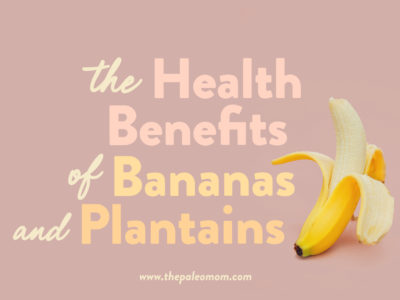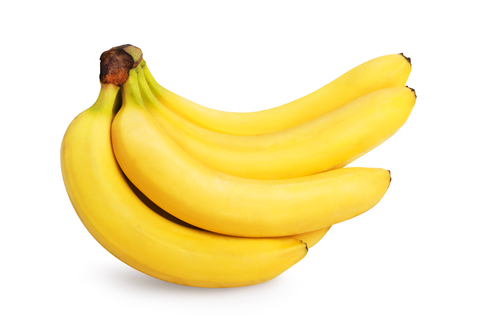 Bananas and plantains are both members of the genus Musa, growing on plants that are technically giant herbs rather than trees (due to having a “pseudostem” made of tightly packed sheaths, rather than a true, woody trunk!). In general, bananas refer to cultivars that are eaten when fully ripe and sweet, while plantains refer to larger, starchier, lower-sugar cultivars that are eaten cooked. Worldwide, plantains are much more common than the sweet “dessert” bananas sold in the United States and Europe. The original scientific name for banana, Musa sapientum, translates to “fruit of the wise men,” and these fruits are believed to be one of the first that humans cultivated (first grown in New Guinea around 8000 BC). And while bananas and plantains are most often eaten as food, in some parts of East Africa, they’re also an important crop for making beer!
Bananas and plantains are both members of the genus Musa, growing on plants that are technically giant herbs rather than trees (due to having a “pseudostem” made of tightly packed sheaths, rather than a true, woody trunk!). In general, bananas refer to cultivars that are eaten when fully ripe and sweet, while plantains refer to larger, starchier, lower-sugar cultivars that are eaten cooked. Worldwide, plantains are much more common than the sweet “dessert” bananas sold in the United States and Europe. The original scientific name for banana, Musa sapientum, translates to “fruit of the wise men,” and these fruits are believed to be one of the first that humans cultivated (first grown in New Guinea around 8000 BC). And while bananas and plantains are most often eaten as food, in some parts of East Africa, they’re also an important crop for making beer!
Unlike the fruits we eat today, original wild bananas and plantains were filled with large, hard seeds; they reached their current form by being hybridized into triploids (which have three sets of chromosomes and don’t form viable seeds). In fact, commercial bananas and plantains don’t reproduce through fertilization: farmers cultivate them by removing the host plant’s underground rhizomes (called banana pups) and replanting them elsewhere!
Most of us are familiar with the long, curved, yellow Cavendish bananas available in most grocery stores (these are the most widely exported bananas globally!), but other commercial banana varieties include:
- Lady finger bananas (also called baby bananas), which are small (3 – 4 inches each), very sweet and creamy, and have a honey-like flavor
- Red bananas, which have reddish purple skin, pink flesh, and a sweet berry-like flavor.
- Blue JaOrinva bananas (also called ice cream bananas), which have a naturally blue-tinged peel before fully ripening and are known for having a texture similar to ice cream and a flavor with vanilla undertones.
- Manzano bananas (also called apple bananas), which are short and thick in shape with a flavor reminiscent of apples, strawberries, or pineapple.
- Burro bananas, which have a slightly square, squatty shape and a subtly lemony taste.
- Gros Michel bananas, which are similar to Cavendish but sweeter and more intensely flavored. (Fun fact: the Gros Michel was the most popular banana until the mid 1960s, when its crops were wiped out by the fungus Fusarium oxysporum, also known as Panama disease. Banana exporters began growing disease-resistant Cavendish cultivars as a replacement crop.)
Nutrients in Bananas and Plantains
Nutritionally, bananas and plantains are both good sources of fiber, potassium, vitamin C, magnesium, and vitamin B6; plantains also contain vitamin A precursors while bananas supply some manganese. A 100-gram portion of banana contains 89 calories, compared to 116 calories per 100 grams of cooked plantain.
Yes, bananas and plantains are nutrient-dense foods! See also The Importance of Nutrient Density and Why Fruit is a Good Source of Carbohydrates.
Bananas and plantains also contain a variety of bioactive compounds, including biogenic amines (including serotonin, dopamine, and norepinephrine), phytosterols, phenolic compounds like catechin, gallocatechin, epicatechin, and gallic acid, and the flavonols myricetin, kaempferol, quercetin, and cyanidin—many of which have been studied for their beneficial health properties in humans! See also The Amazing World of Plant Phytochemicals: Why a diet rich in veggies is so important! and Polyphenols: Magic Bullet or Health Hype?
Unripe (green) bananas and plantains are also high in the RS2 form of resistant starch, which bypasses human digestive enzymes and serves as substrate for gut microbiota further down in the GI tract. (As both these fruits ripen, their resistant starch content decreases while their sugar content increases.) See also Paleo, Resistant Starch, and TMAO: New Study Warning Worth Heeding and Resistant Starch: It’s Not All Sunshine and Roses.
Health Benefits of Bananas and Plantains
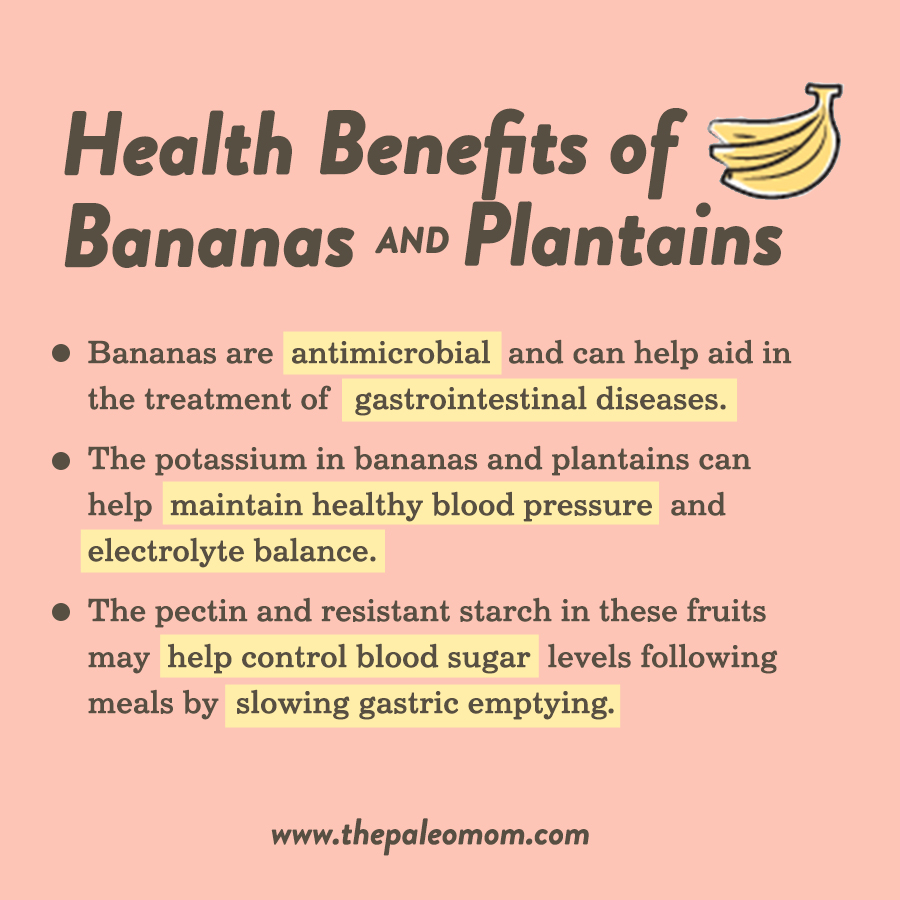 Not surprisingly, plenty of research shows that both bananas and plantains can boost our health!
Not surprisingly, plenty of research shows that both bananas and plantains can boost our health!
A variety of individual compounds in these fruits have demonstrated benefit in humans and other animals. Some of the bioactive compounds in banana—including malic acid, beta-sitosterol, 1,2-hydroxystrearic acid, and succinic acid—exhibit antimicrobial activity, and not surprisingly, multiple studies have shown that bananas can help aid in the treatment of gastrointestinal diseases. In studies of neuron cells, the phenolic compounds in banana extract (along with apple and orange extract) have been shown to protect oxidative stress-induced neurotoxicity. See also The Amazing World of Plant Phytochemicals: Why a diet rich in veggies is so important! and Polyphenols: Magic Bullet or Health Hype?
Green banana flour, rich in resistant starch, has been shown to reduce markers of metabolic syndrome, with one study of overweight women experiencing a reduction in systolic blood pressure and fasting glucose (along with a reduction in hip circumference) after eating 20 grams of green banana flour daily for 45 days. See also Paleo, Resistant Starch, and TMAO: New Study Warning Worth Heeding and Resistant Starch: It’s Not All Sunshine and Roses. Not to mention, the potassium in bananas and plantains can help maintain healthy blood pressure and electrolyte balance, and the pectin and resistant starch in these fruits may help control blood sugar levels following meals by slowing gastric emptying time. See also Is Salt Paleo?
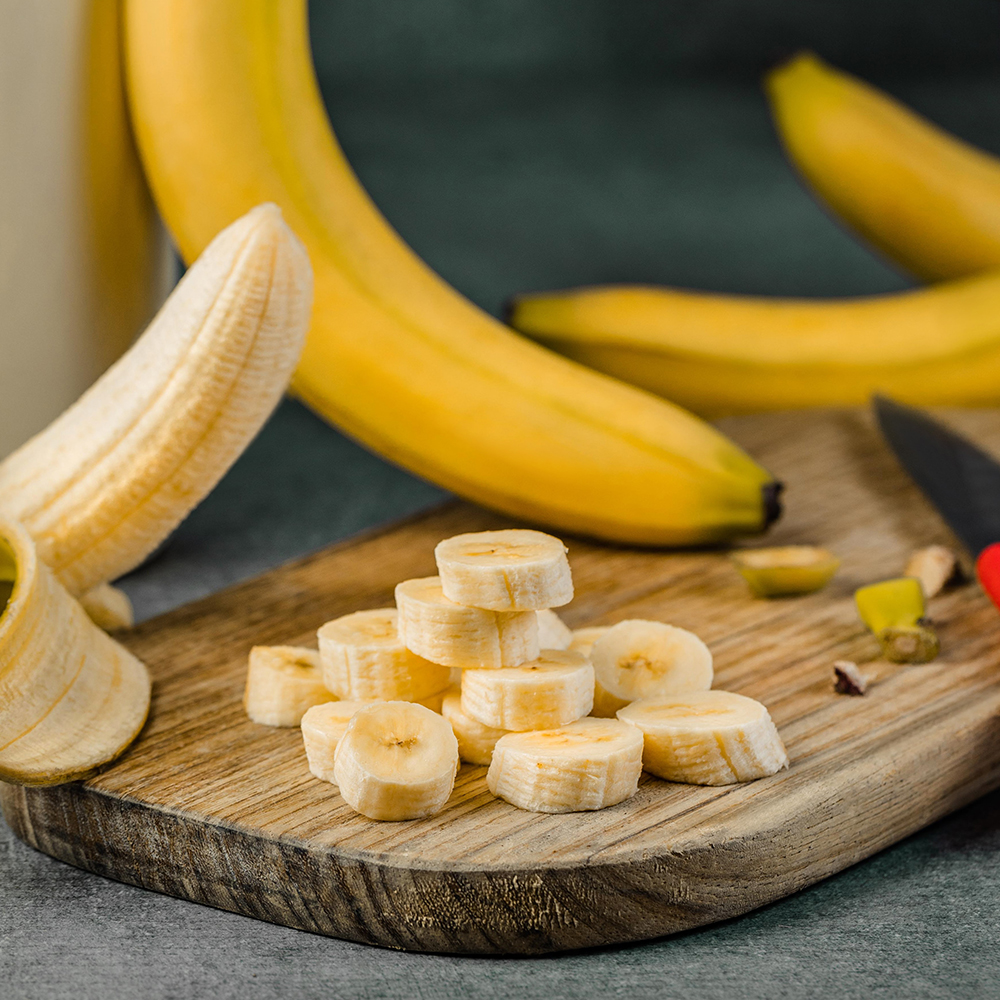 Bananas have also been shown to reduce fasting blood sugar levels and lower the LDL to HDL ratio. One study found that among diabetics, daily consumption of banana was able to improve insulin sensitivity and lower blood cholesterol. A trial of 20 healthy adults found that a single banana meal reduced plasma oxidative stress and made LDL more resistant to oxidizing—both major plusses for cardiovascular health. A case-control study from Uruguay even found that out of all the fruits and vegetables measured, bananas had the most dramatic protective effect against colorectal cancer: eating bananas at least three times a week was associated with a 72% lower risk of colorectal cancer, compared to eating banana less than once per week! And, in a Swedish cohort of 61,000 women, eating bananas four to six times per week was associated with a 50% reduced risk of kidney cancer compared to women who didn’t eat any bananas. A smaller study also found that banana consumption (along with papaya) was associated with a reduced risk of colorectal cancer.
Bananas have also been shown to reduce fasting blood sugar levels and lower the LDL to HDL ratio. One study found that among diabetics, daily consumption of banana was able to improve insulin sensitivity and lower blood cholesterol. A trial of 20 healthy adults found that a single banana meal reduced plasma oxidative stress and made LDL more resistant to oxidizing—both major plusses for cardiovascular health. A case-control study from Uruguay even found that out of all the fruits and vegetables measured, bananas had the most dramatic protective effect against colorectal cancer: eating bananas at least three times a week was associated with a 72% lower risk of colorectal cancer, compared to eating banana less than once per week! And, in a Swedish cohort of 61,000 women, eating bananas four to six times per week was associated with a 50% reduced risk of kidney cancer compared to women who didn’t eat any bananas. A smaller study also found that banana consumption (along with papaya) was associated with a reduced risk of colorectal cancer.
Nutrivore Weekly Serving Matrix
An easy-to-use and flexible weekly checklist
to help you maximize nutrient-density.
The Weekly Serving Matrix is very helpful! I’ve been eating along these lines but this really helps me know where to focus vs. which foods serve a more secondary role. It’s super helpful and has taken a lot of worry out of my meal planning. Thanks!
Jan
Bananas (especially green bananas) may even help increase nutrient absorption in the presence of persistent diarrhea. In one study, 57 babies (all under a year old) were treated for a week with a rice-based diet with or without the addition of green banana. The diet with green banana reduced the babies’ stool weights by 50%, indicating they were absorbing more nutrients. Another study of 31 patients with diarrhea receiving enteral feedings, treatment with banana flakes was more effective than standard medical treatment for combatting the diarrhea (57% of the patients eating banana flakes were diarrhea-free by the end of the study, compared to only 24% of the medically treated patients).
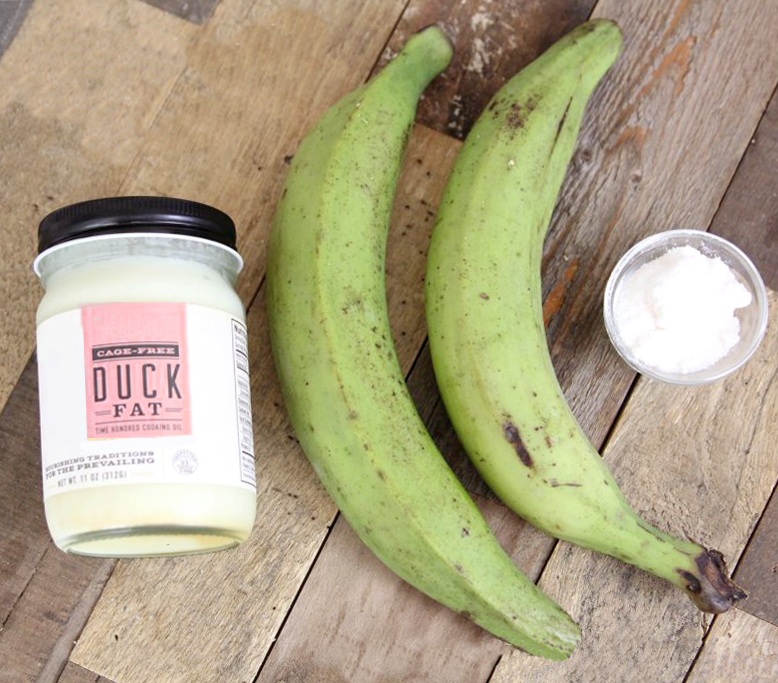 Likewise, plantains have a number of health benefits owing to their unique starch and phytochemical content. For instance, unripe plantains have been shown to help protect against peptic ulcers, particularly due to a flavonoid called leucocyanidin, which has been shown to significantly increase the thickness of the stomach’s mucus membrane. Plantain flour, rich in resistant starch, can dramatically reduce the glycemic response to meals: one study found that compared to bread, cooked unripe plantain pulp led to a 40% lower area under the glycemic curve, while unripe plantain starch led to a 90% lower area under the curve; another study found that adding plantain flour to cookie ingredients led to cookies with a significantly lower glycemic response. A human trial showed that eating unripe plantain flour three times per week (for six weeks total) led to significantly lower hunger and greater satiety, greater insulin sensitivity, and a spontaneous 14% reduction in energy intake—suggesting that plantains may be helpful in weight management.
Likewise, plantains have a number of health benefits owing to their unique starch and phytochemical content. For instance, unripe plantains have been shown to help protect against peptic ulcers, particularly due to a flavonoid called leucocyanidin, which has been shown to significantly increase the thickness of the stomach’s mucus membrane. Plantain flour, rich in resistant starch, can dramatically reduce the glycemic response to meals: one study found that compared to bread, cooked unripe plantain pulp led to a 40% lower area under the glycemic curve, while unripe plantain starch led to a 90% lower area under the curve; another study found that adding plantain flour to cookie ingredients led to cookies with a significantly lower glycemic response. A human trial showed that eating unripe plantain flour three times per week (for six weeks total) led to significantly lower hunger and greater satiety, greater insulin sensitivity, and a spontaneous 14% reduction in energy intake—suggesting that plantains may be helpful in weight management.
Bananas and Plantains Are Great for Gut Health!
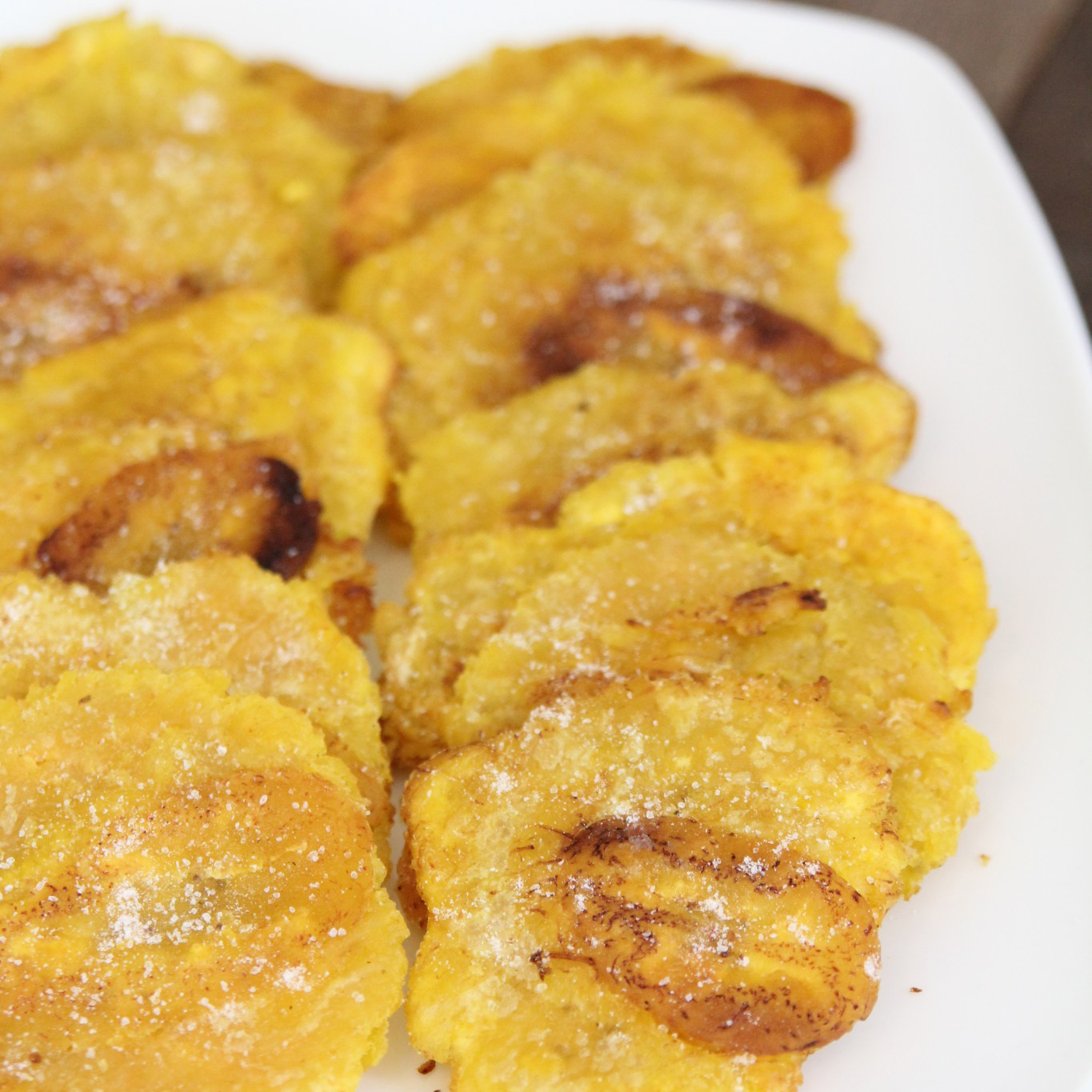 When it comes to gut health, bananas contain a number of components that make our gut critters happy! See also What Is the Gut Microbiome? And Why Should We Care About It? Along with their phenolic compounds, this fruit is a source of fructo-oligosaccharides and resistant starch (especially in under-ripe bananas), both of which serve as prebiotics for beneficial gut bacteria. The type of resistant starch in bananas (RS2) get fermented in the large intestine into beneficial short-chain fatty acids, and can specifically increase the abundance of Eubacterium rectale, Faecalibacterium, and Bifidobacterium. And some of these expected effects have indeed been demonstrated in studies: a randomized, controlled trial of healthy women found that compared to the control group, the group consuming a banana twice daily as a pre-meal snack experienced a rise in Bifidobacterium levels and also enjoyed significantly lower abdominal bloating!
When it comes to gut health, bananas contain a number of components that make our gut critters happy! See also What Is the Gut Microbiome? And Why Should We Care About It? Along with their phenolic compounds, this fruit is a source of fructo-oligosaccharides and resistant starch (especially in under-ripe bananas), both of which serve as prebiotics for beneficial gut bacteria. The type of resistant starch in bananas (RS2) get fermented in the large intestine into beneficial short-chain fatty acids, and can specifically increase the abundance of Eubacterium rectale, Faecalibacterium, and Bifidobacterium. And some of these expected effects have indeed been demonstrated in studies: a randomized, controlled trial of healthy women found that compared to the control group, the group consuming a banana twice daily as a pre-meal snack experienced a rise in Bifidobacterium levels and also enjoyed significantly lower abdominal bloating!
Plantains have some specific effects on the gut microbiota as well. Consuming unripe plantains can increase the production of butyrate, acetate, and propionate in the gut, due to SCFA-producing bacteria feeding on the resistant starch in the plantains. Non-starch polysaccharides from plantains have also been shown to feed more bacteria (especially members of Bacteroides) than non-starch polysaccharides from other plant foods tested (apple, oat, and broccoli), while also inhibiting the adhesion of the pathogens Salmonella typhimurium, Shigella sonnei, and Clostridium difficile in the GI tract. Interestingly, plantain polysaccharides also serve as a binding site for diarrhea-causing E. coli, and may therefore help prevent E. coli from colonizing the gut by serving as an alternative binding substrate.
Hoorah for Bananas and Plantains!
All in all, bananas and plantains bring some very special benefits among members of the fruit world!
Here are some of my favorite recipes featuring bananas and plantains! Enjoy!
- Paleo Waffles
- Perfect Paleo Pancakes
- Chocolate Banana Bread (Egg-Free)
- Barbecued Stuffed Bananas
- Avocado-Banana Sorbet with Candied Walnuts
- Puerto Rican Plantain Lasagna (Pastelon)
- Nightshade-free Plantain Curry Lasagna
- Epic Tostones
- Blueberry Muffins (Basic Muffin Recipe)
Citations
Agama-Acevedo E, et al. “Starch digestibility and glycemic index of cookies partially substituted with unripe banana flour.” LWT – Food Science and Technology. 2012 Mar 31;46(1):177-182. doi: 10.1016/j.lwt.2011.10.010
Blackman, Ruth V. “The effects of plantain non starch polysaccharide upon the gut bacteria.” EThOS. University of Aberdeen. 2009.
da Silva ST, et al. “Women with metabolic syndrome improve antrophometric and biochemical parameters with green banana flour consumption.” Nutr Hosp. 2014 May 1;29(5):1070-80. doi: 10.3305/nh.2014.29.5.7331.
Deneo-Pellegrini H, et al. “Vegetables, fruits, and risk of colorectal cancer: a case-control study from Uruguay.” Nutr Cancer. 1996;25(3):297-304. doi: 10.1080/01635589609514453.
Falcomer AL, et al. “Health Benefits of Green Banana Consumption: A Systematic Review.” Nutrients. 2019 May 29;11(6):1222. doi: 10.3390/nu11061222.
Hoffmann-Sardá FA, et al. “Impact of resistant starch from unripe banana flour on hunger, satiety, and glucose homeostasis in healthy volunteers.” Journal of Functional Foods. 2016 Jun;24:63-74.
Kumar KPS, et al. “Traditional and Medicinal Uses of Banana.” Journal of Pharmacognosy and Phytochemistry, 2012;1(3).
Lewis DA, et al. “A natural flavonoid present in unripe plantain banana pulp (Musa sapientum L. var. paradisiaca) protects the gastric mucosa from aspirin-induced erosions.” J Ethnopharmacol. 1999 Jun;65(3):283-8. doi: 10.1016/s0378-8741(99)00005-7.
Menezes EW, et al. “In vitro colonic fermentation and glycemic response of different kinds of unripe banana flour.” Plant Foods Hum Nutr. 2010 Dec;65(4):379-85. doi: 10.1007/s11130-010-0190-4.
Mitsou EK, et al. “Effect of banana consumption on faecal microbiota: a randomised, controlled trial.” Anaerobe. 2011 Dec;17(6):384-7. doi: 10.1016/j.anaerobe.2011.03.018. Epub 2011 Apr 16.
Roberts CL, et al. “Soluble plantain fibre blocks adhesion and M-cell translocation of intestinal pathogens.” J Nutr Biochem. 2013 Jan;24(1):97-103. doi: 10.1016/j.jnutbio.2012.02.013. Epub 2012 Jul 19.
Singh B, et al. “Bioactive compounds in banana and their associated health benefits – A review.” Food Chem. 2016 Sep 1;206:1-11. doi: 10.1016/j.foodchem.2016.03.033. Epub 2016 Mar 11.
Yin X, et al. “Banana prevents plasma oxidative stress in healthy individuals.” Plant Foods Hum Nutr. 2008 Jun;63(2):71-6. doi: 10.1007/s11130-008-0072-1. Epub 2008 Feb 9.

